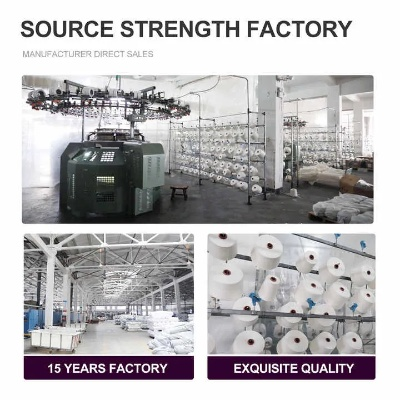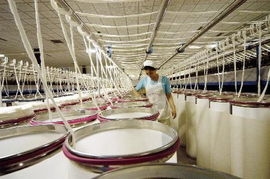The Role of Textile Functional Finishing in Fashion and Apparel Industry
Introduction: In the world of fashion and apparel, textile functional finishing is a crucial aspect that not only enhances the aesthetic appeal of garments but also improves their performance characteristics. From enhancing durability to adding color and texture, this process plays a significant role in making clothing more functional and appealing for consumers. In this article, we will delve into the various functions of textile functional finishing and explore how it contributes to the overall success of fashion and apparel products.

Textile Functional Finishing Functions:
-
Durability and Stability: Textile functional finishing can significantly enhance the durability and stability of fabrics. For example, applying a protective coating on cotton fabric can prevent fading, pilling, and wrinkles, ensuring that the fabric remains vibrant and intact over time.
-
Color Preservation: Color-fastness treatment is another essential function of textile functional finishing. By using special chemicals or finishes, manufacturers can ensure that the colors remain vibrant and fade slowly, even after repeated washings or exposure to sunlight.
-
Antibacterial and Antimicrobial Properties: Textile functional finishing can introduce antibacterial properties to fabrics. This is particularly useful in the production of sportswear, where the fabric must resist bacterial growth and maintain its hygiene properties.
-
Moisture Management: Some functional finishing treatments aim to improve the moisture management properties of fabrics. For instance, using moisture-wicking technology can make fabrics more breathable, allowing them to regulate body temperature better and reduce sweat buildup.
-
Ease of Care: Textile functional finishing can simplify care instructions by introducing easy-to-follow care labels. For example, using an eco-friendly finish that requires minimal water or detergent can make washing clothes easier for customers.
-
Customization: Textile functional finishing can be customized to meet specific customer requirements. For example, some companies offer custom dyeing services that allow customers to have their favorite colors or patterns printed directly onto the fabric.
-
Enhanced Texture: Adding texture to fabrics through functional finishing can add visual interest and provide a tactile experience. For example, adding microfiber threads or incorporating metallic fibers can give fabrics a luxurious feel.
-
Flexibility and Stretchability: Textile functional finishing can improve the flexibility and stretchability of fabrics, making them more comfortable to wear and suitable for different activities.
-
Skin-Friendly: Some functional finishing treatments are specifically designed to be skin-friendly, reducing the risk of allergic reactions or irritation when worn against the skin.
-
Cost-Effectiveness: Functional finishing can be cost-effective, providing a balance between functionality and price point. For example, using eco-friendly materials or implementing simple finishing techniques can help reduce manufacturing costs without sacrificing quality.
Case Study: Consider the case of Nike's Air Max shoes. Nike has developed a functional finishing process called "Nike Dry," which uses a specialized material to create a moisture-wicking layer on the upper part of the shoe. This layer helps to keep feet dry and reduces odor, making the shoes more hygienic and comfortable to wear. Additionally, the use of recycled materials in the production process further adds to the brand's commitment to sustainability and environmental responsibility.

Conclusion: In conclusion, textile functional finishing plays a vital role in enhancing the performance characteristics of fashion and apparel products. From improving durability and stability to adding color and texture, these finishing treatments help to create products that are both functional and appealing to consumers. As technology continues to advance, we can expect more innovative and sustainable functional finishing methods to emerge, further revolutionizing the fashion and apparel industry.
大家好,今天我们来聊聊纺织品功能整理的话题,纺织品功能整理是指通过一系列技术手段,对纺织品进行优化处理,提升其使用性能和舒适度,下面我们就从定义、分类、应用案例等方面来详细介绍纺织品功能整理。
纺织品功能整理的定义
纺织品功能整理是一种综合性的技术手段,旨在提高纺织品的耐穿性、吸湿性、透气性、抗皱性等性能,它通过改变纺织品的结构、材质和表面特性,使其更加符合人们的穿着需求和使用环境。
纺织品功能整理的分类
- 物理整理:通过机械力、热力等物理手段,对纺织品进行整理,如压皱、定型、加固等。
- 化学整理:利用化学试剂或高分子材料对纺织品进行整理,如染色、印花、防水处理等。
- 生物整理:利用生物技术对纺织品进行整理,如抗菌、防霉、防污等。
纺织品功能整理的应用案例
- 服装面料整理:在服装行业中,纺织品功能整理广泛应用于各种面料,如棉质面料、丝绸面料、羊毛面料等,通过不同的整理手段,可以提升面料的耐穿性、吸湿性、透气性等性能,使服装更加舒适、美观。
- 家居用品整理:在家居用品领域,纺织品功能整理也可以发挥重要作用,毛巾、床单等家居用品可以通过整理提高吸湿性、抗皱性等性能,提高使用舒适度。
- 工业用纺织品整理:在工业领域,纺织品功能整理可以应用于各种工业用纺织品,如过滤材料、防护服等,通过整理提高纺织品的耐穿性、抗污染性等性能,提高工业用纺织品的实用性和安全性。
纺织品功能整理的技术手段
- 机械整理:通过机械力对纺织品进行拉伸、定型等处理,使纺织品达到所需的形状和尺寸。
- 化学整理:利用化学试剂对纺织品进行染色、印花等处理,改变纺织品的颜色和图案。
- 生物整理:利用生物技术对纺织品进行抗菌、防霉等处理,提高纺织品的卫生性能。
纺织品功能整理的实践案例
以某品牌服装为例,该品牌采用先进的纺织技术进行服装面料的功能整理,通过使用物理整理手段,如压皱技术,使服装面料更加柔软舒适;通过化学整理手段,如染色技术,使服装面料具有丰富的颜色和图案选择,这样的处理方式不仅提高了服装的耐穿性和舒适度,还提高了服装的美观度和实用性。
纺织品功能整理是一种综合性的技术手段,它通过改变纺织品的结构、材质和表面特性,使其更加符合人们的穿着需求和使用环境,在服装、家居用品、工业用纺织品等领域都有广泛的应用,通过实践案例可以看出,纺织品功能整理可以提高纺织品的耐穿性、吸湿性、透气性等性能,提高使用舒适度和美观度,同时也可以提高纺织品的卫生性能和实用性,在纺织品的生产和销售过程中,纺织品功能整理是一个重要的环节。
Articles related to the knowledge points of this article:
Underwater Lint Removal:The Process of Textile Processing
Advanced Techniques for Textile Cropping in the Factory



